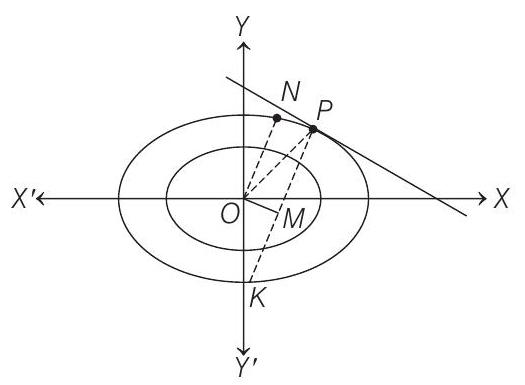Application of Derivatives 4 Question 25
####26. Find the coordinates of all the points
(a)
(b)
(c)
(d)
Show Answer
Answer:
Correct Answer: 26. (b, c)
Solution:
- Let the coordinates of
Equations of tangents at

Again, equation of normal at point
Let
Area of
Now,
[perpendicular from
and
Thus, area of
For maximum or minimum, we put
Also,
$
0 \text {, if } 0<\theta<\tan ^{-1}(b / a) $
Therefore,
Again,
By using symmetry, we get the required points






